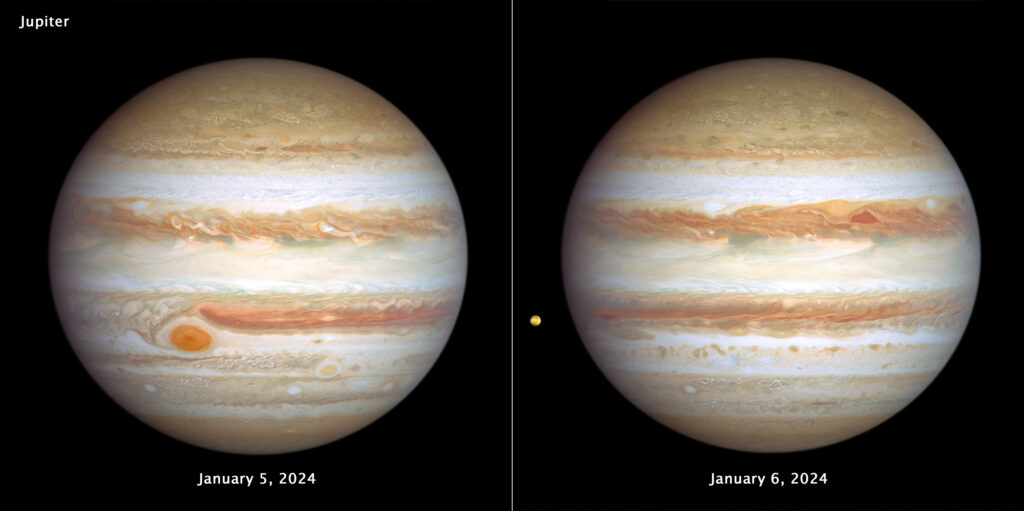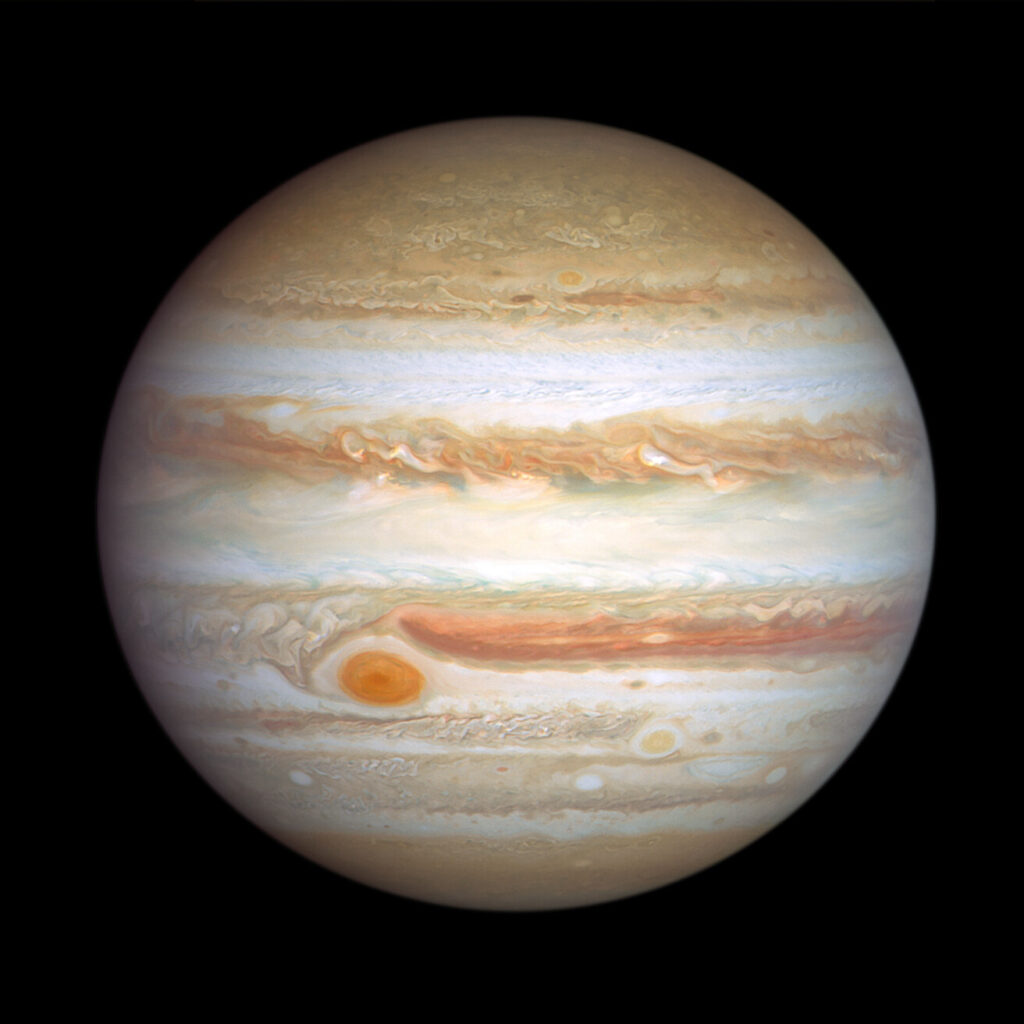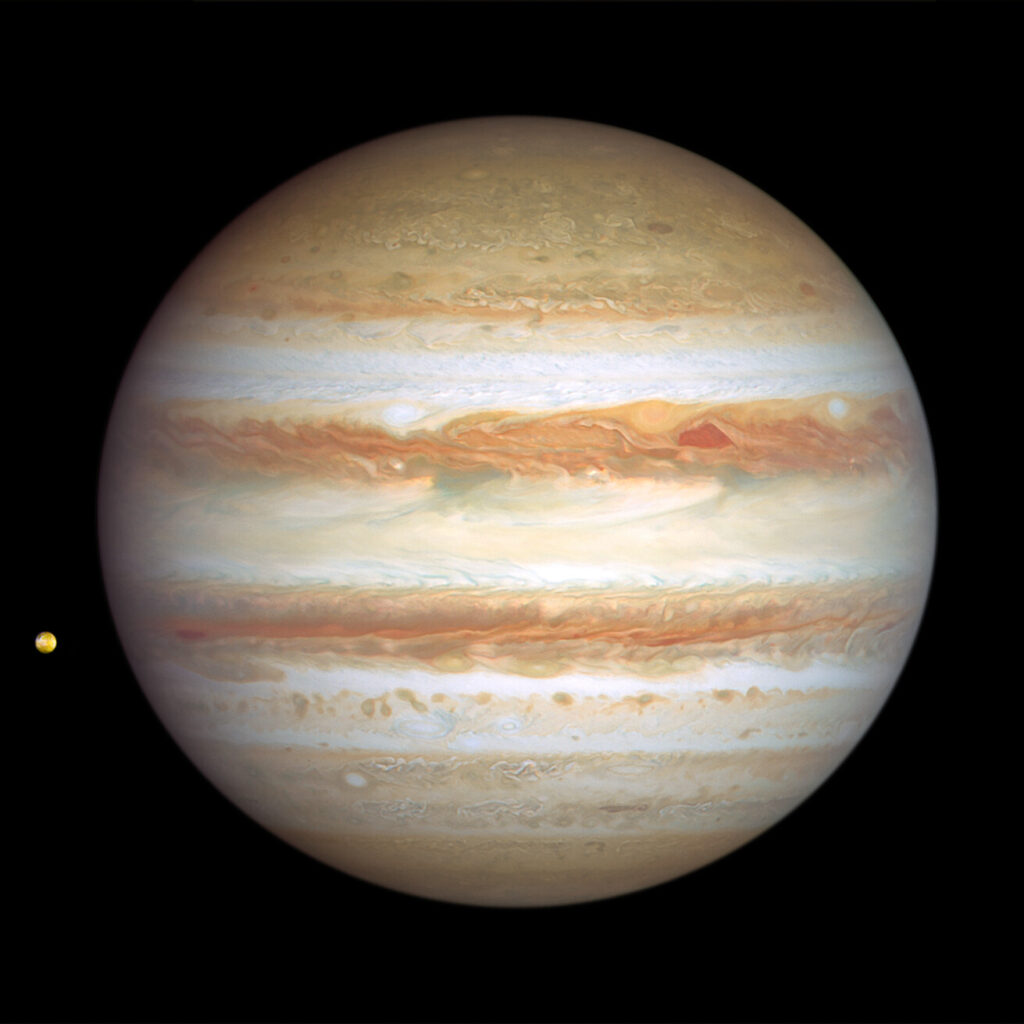Astronomers working with the Hubble telescope have published a series of new images taken on January 5 and 6, 2024. They depict the largest planet in the Solar System — Jupiter.

The atmosphere of Jupiter is an ever-changing kaleidoscope of all kinds of shapes and colors. This is a planet of hurricanes, where cyclones, anticyclones, wind shear can be found, as well as the largest storm in the Solar System — the Great Red Spot. Jupiter has no solid surface and is forever covered with clouds made up of ammonia crystals, which give the planet a striped appearance. The stripes are formed due to the fact that in different latitudes the air moves in different directions at speeds reaching 560 km/h. The bright areas where the atmosphere rises are called zones. The darker areas where the air descends are called belts. When these opposite flows interact, storms and turbulence occur.
The first Hubble image is dominated by the Great Red Spot (GRS). Despite the decrease in size, this storm is still large enough to accommodate the Earth.

To the right of it, in more southern latitudes, is an object that is sometimes called a Small Red Spot. This anticyclone was formed as a result of the merger of storms in 1998 and 2000. In 2006, it turned red for a while, then turned pale beige again, and this year, it has become a little redder again. The exact mechanism of storm color change is still unknown. It can be associated with a number of chemical compounds like sulfur, phosphorus, or organic substances. A small red spot moves around Jupiter in the opposite direction from the GRS and passes next to it every two years.
The second image captures storm activity in the opposite hemisphere of Jupiter. To the right of the center, you can see a dark red cyclone and a reddish anticyclone. They rotate in opposite directions, which indicates the alternation of high and low pressure systems. Their collision is unlikely, since the mismatched rotation will push the storms away from each other.

In the left part of the image, you can also see Io, the most geologically active body in the Solar System, with hundreds of active volcanoes on its surface. Even in this photo, the characteristic color of the moon’s surface is visible, due to powerful volcanic deposits, which mainly consist of sulfur.
According to esahubble.org
Follow us on Twitter to get the most interesting space news in time
https://twitter.comne/ust_magazine


